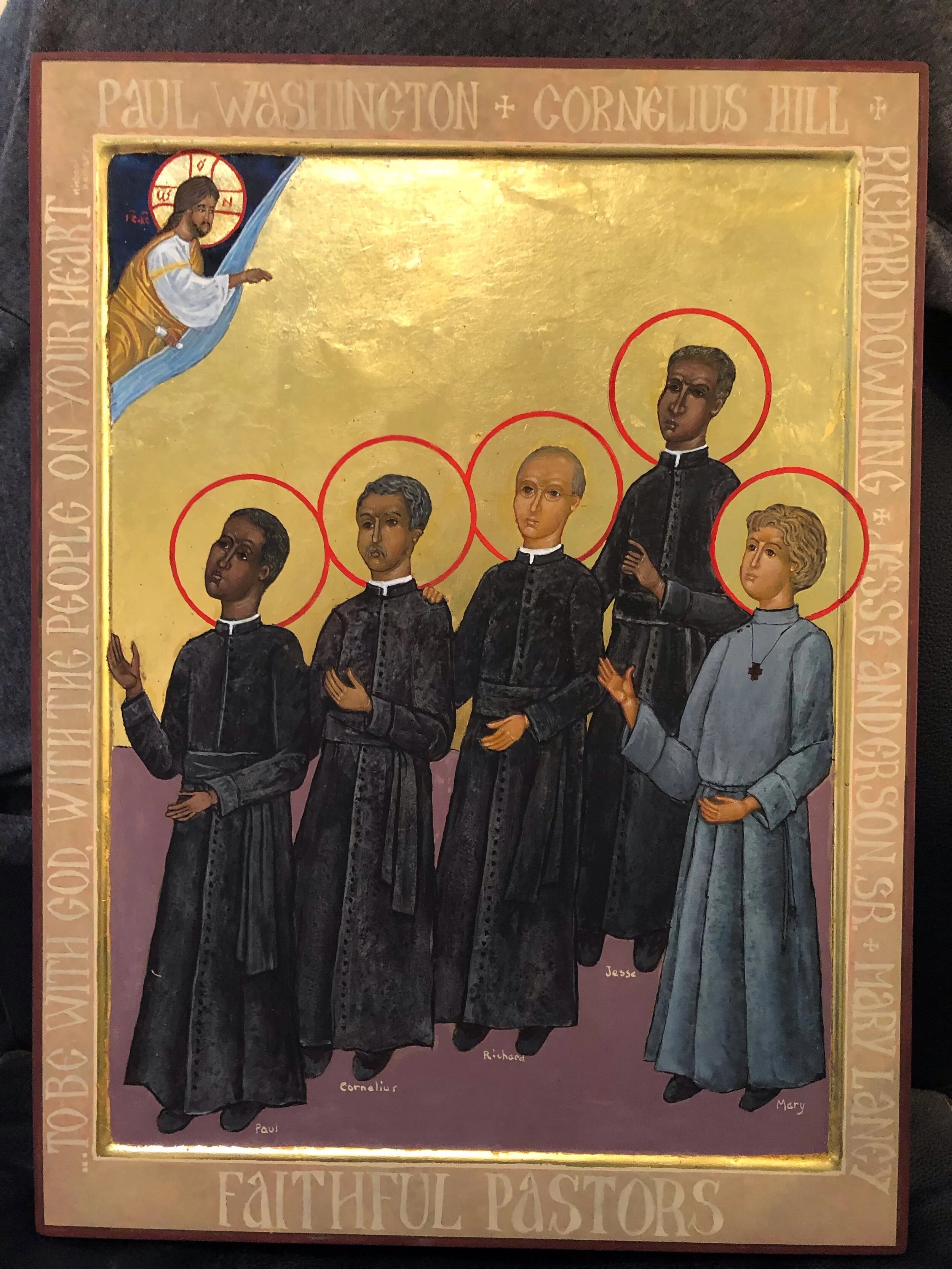Before the Icon
V. Serve the Lord with intelligence and courage
R. Be ye steadfast
V. Thanks be to God, who gives us the victory
R. Be ye steadfast
A reading
Behold, I shew you a mystery; We shall not all sleep, but we shall all be changed, In a moment, in the twinkling of an eye, at the last trump: for the trumpet shall sound, and the dead shall be raised incorruptible, and we shall be changed. For this corruptible must put on incorruption, and this mortal must put on immortality. So when this corruptible shall have put on incorruption, and this mortal shall have put on immortality, then shall be brought to pass the saying that is written, Death is swallowed up in victory. O death, where is thy sting? O grave, where is thy victory? The sting of death is sin; and the strength of sin is the law. But thanks be to God, which giveth us the victory through our Lord Jesus Christ. Therefore, my beloved brethren, be ye stedfast, unmoveable, always abounding in the work of the Lord, forasmuch as ye know that your labour is not in vain in the Lord. (1 Corinthians 15: 51-58, KJV)
A collect
Loving God, we bless your Name for Frances Perkins who in faithfulness to her baptism sought to build a society in which all may live in health and decency: Help us, following her example and in union with her prayers, to contend tirelessly for justice and for the protection of all, that we may be faithful followers of Jesus Christ; who with you and the Holy Spirit lives and reigns, one God, for ever and ever. Amen.
Blessed Frances, protector of those in need, pray for us.
————————————————-
Feast Day May 13 About Frances Perkins Frances & Faith Lectionary
April 10, 1880 – May 14, 1965
In 1905 Frances became an Episcopalian. Kirstin Downey, her biographer, wrote,
She sought a more structured religion with a more formal ceremony… She reveled in its elaborate and archaic rituals. They helped her remain serene and centered at times of stress. The church’s teaching also gave her substantive guidance about the right path to take when confronted with decisions, and the hopeful message of Christianity helped her retain her optimism. Her devotion waxed and waned over the years, but nonetheless served as a bedrock and a way to seek meaning in life when so much seemed inexplicable. These religious leanings became progressively more pronounced over time. (The Woman Behind the New Deal: The Life of Frances Perkins, FDR'S Secretary of Labor and His Moral Conscience)
When she was Secretary of Labor, she made a monthly retreat with the All Saints' Sisters of the Poor in nearby Catonsville, Maryland. During her years of service in Washington she attended Saint James, Capital Hill (now Saint Monica’s and Saint James). A news article
I have discovered the rule of silence is one of the most beautiful things in the world. It preserves one from the temptation of the idle word, the fresh remark, the wisecrack, the angry challenge…. It is really quite remarkable what it does.
― Frances Perkins in The Roosevelt I Knew
The vocation of the laity, I think, is a vocation to handle the secular affairs as Christians and as instructed Christians who know what the end purpose of Man’s life on earth is … So instructed, they can develop an order and a system in their particular field of operations which is a Christian system …So, I plead…for a consistent instruction by the clergy and the church to the laity in which the nature of their responsibility is—what Christian principles are that are to be applied in conducting a bank, in running a business, in operating a labor union, in keeping house and doing the marketing—in any of the multiple activities of the secular life which fall to the lot of Christians. (pp. 45 and 48) Tread the Streets Again: Francis Perkins shares her theology by Donn Mitchell, 2018.
Icon writer: Suzanne Schleck Web











